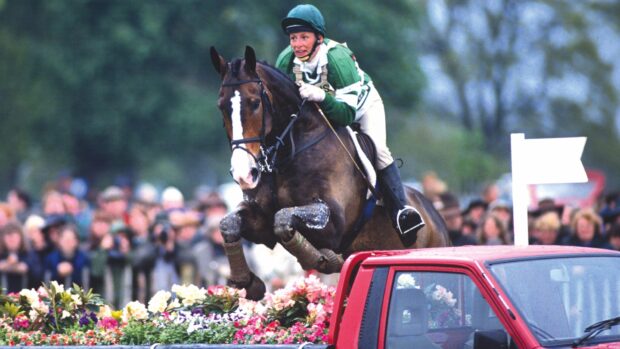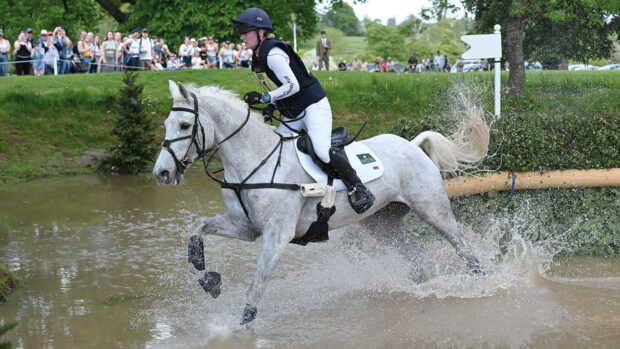Geoff Lane, veterinary delegate at Badminton Horse Trials for the past 12 years and a member of the veterinary team for more than 20, heads a team of 15 official vets, whose job it is to care for the equine stars of the world’s greatest three-day event.
Although Saturday is potentially the busiest time for the vets, Lane’s job begins as soon as horses arrive, when he inspects them, checks passports and begins a data sheet on each horse — to which notes are added as the week progresses.
Throughout the event he makes twice daily stable rounds and a fully equipped on-site treatment centre is manned by two vets 24 hours a day.
“Though there is a slight historical perception that we are out to ‘catch people out’, I think the message is getting through that we are really there to help,” says Lane.
Unsurprisingly, Badminton is thick with vets on cross-country day, including one at Phase C (in case a horse should tie up after the steeplechase), and two at the finish who check each horse over, and occasionally offer a very tired one a lift back to the stables in a trailer.
“Most of the effort required is in the hospital,” explains Lane. “You get all sorts of bumps and bruises, the odd tendon injury and joints may flare up. There is oxygen available, as needed, and fluids are quite commonly given.”
By Saturday evening there are, says Lane, “more vets and physios than you can shake a stick at” at the stables although “if anyone wants to administer anything, from fluids upwards, it goes past me”.
While Lane clearly takes great pride in the professionalism of his own team, and relishes the memory of watching the great Mark Todd in action, his greatest heroes are the horses, especially those which arrive, sound as a bell, with three or four Badminton stamps in their passport already. And much as he looks forward to the event, Sunday night is a happy time, when the same superstars return safely home.
The veterinary timetable
- On arrival on the Tuesday of the event, each horse is presented to the vet and its passport checked
- A “health record” is opened at this point for each competing horse, on which comments and notes are made about each horse throughout the event
- Geoff Lane makes twice-daily stable rounds
- A high-tech treatment centre is set up at the stables, capable of handling most things except surgery. This is manned full-time by two vets
- A team of 15 official vets works at Badminton, but many riders bring their own, too. All the official vets have experience of working at other equestrian events and attend a trauma management course at least every five years
- The vets monitor horses throughout phase D and may ask the ground jury to stop any horse they have concerns about
The final trot-up
The vets realise that the horses have been through the equine equivalent of a very tough rugby match, explains Lane: “The question is not so much ‘is this horse 100% sound?’ but ‘is it safe to continue the competition?'”
While no one expects to see a properly lame horse passed, onlookers always applaud when a slightly sore one is allowed to continue.
“Sometimes we put horses in the holding box to show people we aren’t blind, but a stiff horse is not necessarily going to hurt itself if it takes a bit of exercise,” adds Lane. “We’re not looking at these horses as though we’re about to buy them.”
The veterinary panel has learnt to enjoy the fashion parade that the Sunday trot-up has also become.
“It might explain why one or two seemingly sound horses have been asked to trot again,” he comments with a chuckle.



